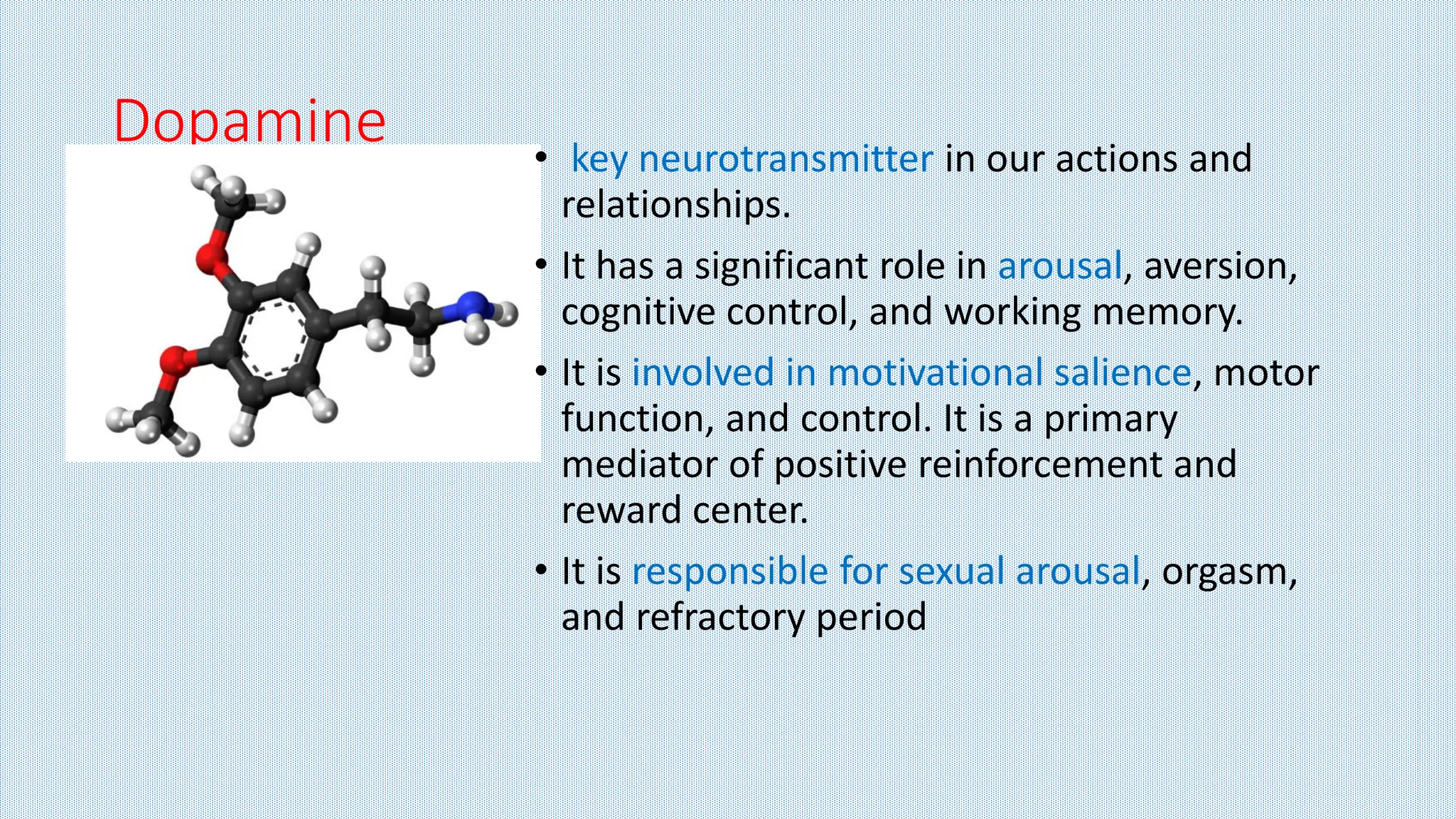Neurotransmitters are chemical messengers that transmit signals between neurons. There are several major neurotransmitter systems, including acetylcholine, dopamine, norepinephrine, serotonin, GABA, glutamate, and endorphins. Each neurotransmitter has a distinct function, such as regulating mood, movement, learning, sleep, and pain. Imbalances in neurotransmitter systems can lead to neurological and psychiatric disorders.























